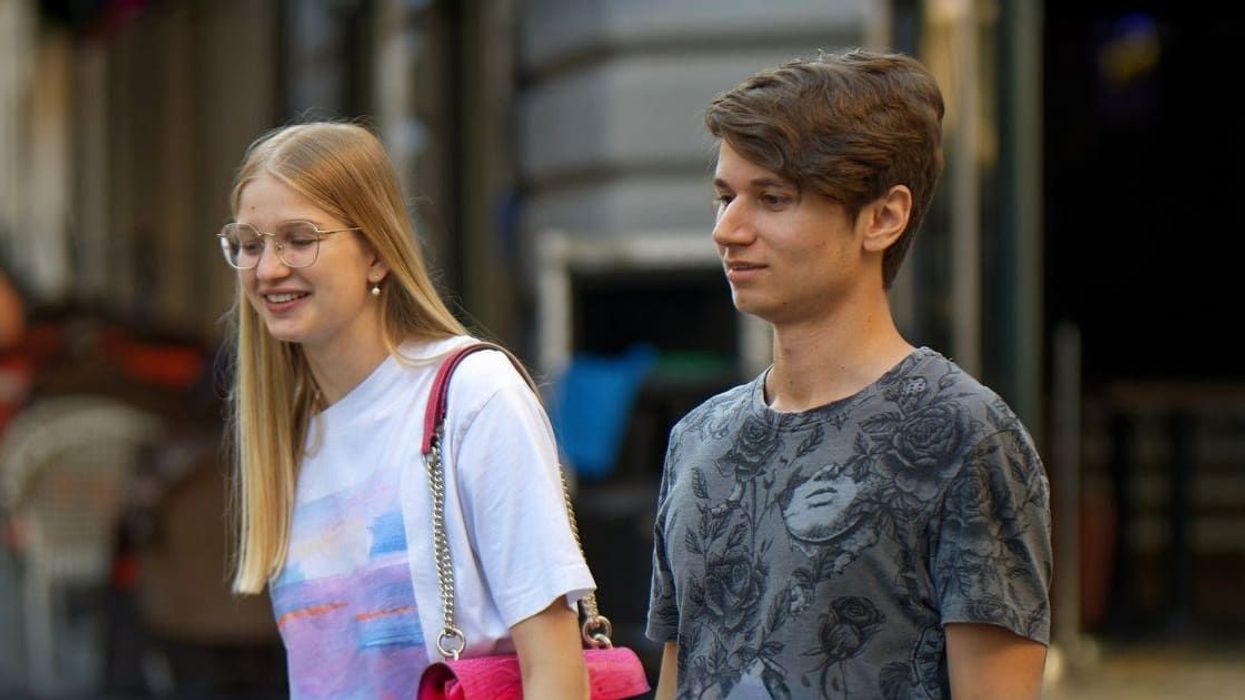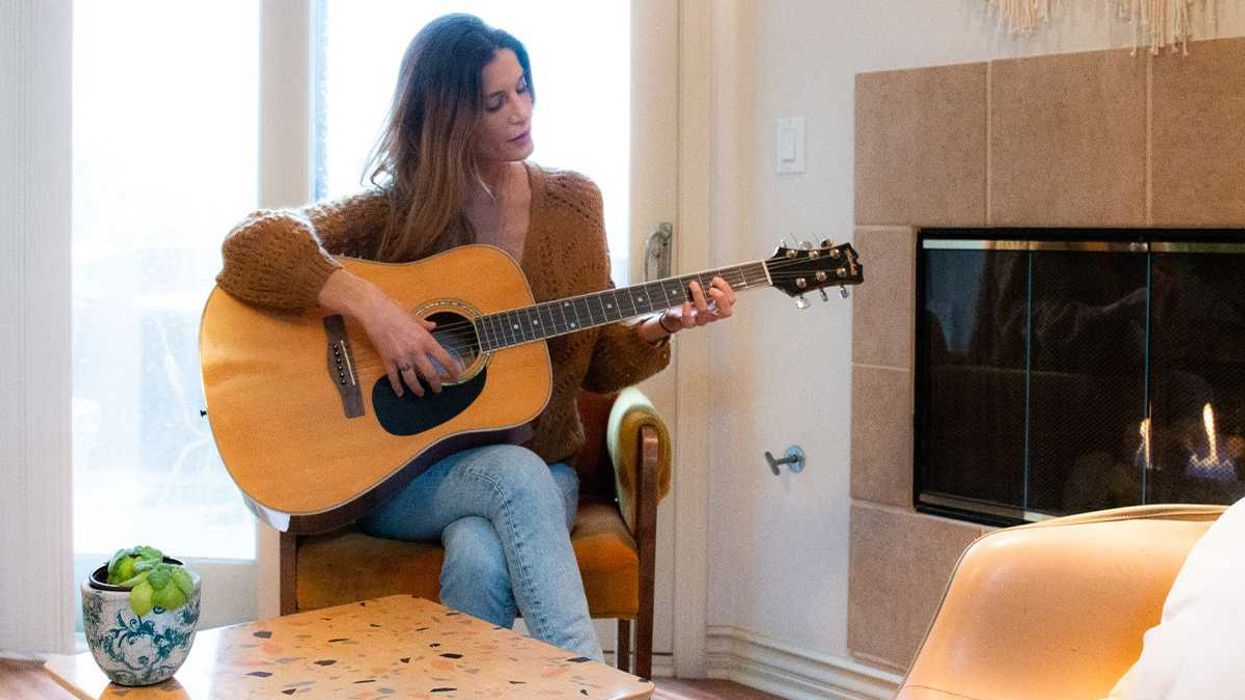If you happened to be on the streets of San Francisco last weekend, particular Market, you were certainly in for a (cardboard) treat.
With a budget of $80,000, the Montreal-based Daily Tous les Jours design studio, notorious for their weirdly imaginative public space projects—like group swing sets—set up their latest, Knock Stop Music. A public music installation where pedestrians created songs via makeshift carboard stoplights, this orchestra of knocking was part of The Market Street Prototyping Festival, which ran April 9 through 11. The festival showcased 50 projects ranging from dreamy prototype to reality, and created a futuristic streetscape in the process.
The co-founders of this fanciful firm, which is no stranger to activating local communities, are Mouna Andraos and Melissa Mongiat, both design professors at the Université du Québec à Montréal. With their team, they came up with the project, which they hope gets local pedestrians jamming together in an improvised collaboration.
Described as “the boundary of two street grids,” Market Street could be called Transportation Street, in that buses, streetcars, and cars fill it curb-to-curb. The prototyping festival is all part of a plan to redesign the iconic roadway that separates two sides of San Francisco. It started in 2011 when the Better Market Street project launched an initiative to improve the area. Their survey found “placemaking” (the idea of building communities around places) was their highest priority.
Better Market Street’s ultimate goal is creating what they call a “Streetlife zone,” a public space that brings together pedestrians, cyclists, and public transit in harmony, making Market Street’s surrounding environment more of a destination, rather than a place only seen in passing.
“We hope this will be a bridge between people on both sides of the street, and make a proposal for when there are no more cars on Market Street,” said Andraos on the phone from her office in Montreal.
The Market Street overhaul, which is planned to begin construction in 2018, just might eliminate car traffic on the street, albeit only on parts.
“This is one way to imagine the future of Market Street,” said Andraos. “If there were no streets, both sidewalks would be joined. Then what would happen? We wanted to emulate these things in a playful way.”
Here’s how it works: If you walk up to the cardboard traffic light and give it a knock (yes, literally knock on the cardboard pillar), music starts to play. Keep knocking and more beats will layer, and the light begins to flash across the street. The music plays a loop together for an “orchestra” united by both sides of the crossing. Dancing is optional. “When you knock you send a musical note and light signal to the other side of the street,” said Mongiat, on the phone from Market Street in San Francisco.
But cardboard? Really? “Since it is a temporary festival, we didn’t want to create something that was going to generate a lot of waste, so cardboard became a solution for something temporary that is meant to be interactive,” said Mongiat. But Andraos admitted a deeper meaning, “We’re mixing the cardboard prototype and high tech.”
“We really see this project as reinventing the traffic light on a more human scale between two sides of the street. All parts been able to do that’s through music and it won’t last forever.”
The beats are also a metaphor for their low-grade materials-meets-high tech approach. One side of the street has electronic beats made with synthesizers; I like to call this Techno Street. Meanwhile, the other side of the street plays samples of classical (or traditional) instruments, like a vibraphone, percussion and a triangle. “We recorded the samples with real instruments,” said Andraos.
One side of the street has the red lights, while the other side has the green lights. But no yellow? “There almost was,” said Andraos, “[but]we went for the basics.”
All in all, the musical street lights are basically electro synths versus analogue instruments. Each knock generates a note. The compositions become more layered the more you knock. “We invite people to play with each other,” said Andraos.
The project is inspired by Charles Montgomery’s book Happy City, which claims that urbanism is the key to our public happiness. Once upon a time, according to the history of the street, it was a place for pedestrians. When cars started arriving, the simple act of walking became increasingly chaotic. The car was the source of the issue but there were no regulations. Street signage and traffic lights were initially announced in an era of the car as being the main element of how we design streets. Pedestrians no longer had access to spaces they had before. “That changed the dynamic of public space,” Andraos. “We wanted to give the traffic light back to people and re-appropriate it.”
In other words, these traffic lights are for pedestrians. “They ignore cars,” said Mongiat. “People who don’t know each other can come together to enchant their everyday in a magical way.”
















 Otis knew before they did.
Otis knew before they did.